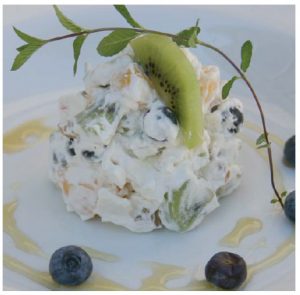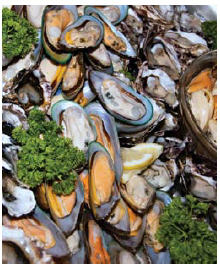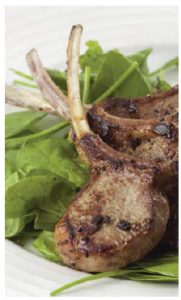
Situated in the South Pacific Ocean, New Zealand consists of two larger islands (North Island and South Island) and further south, a tiny third, Stewart Island. The country is located just east of the southern part of Australia, across the Tasman Sea. Former Canadian high commissioner to New Zealand, Penny Readie, says New Zealand’s amazingly diverse topography — from fiords, mountains, geysers and glaciers, to rolling hills, kilometres of beaches and even a desert — accounts for the country’s remarkable beauty.
Archeological evidence dates the arrival of mankind to New Zealand to approximately AD 1300, when Polynesians from islands to the northeast discovered it. Migration followed in waves and peaked later in the 14th Century with a virtual flood coming from a fabled land believed to be Tahiti.
These migrants developed a well-defined Maori culture and social organization based on tribes, and known as Maori iwi. Sub-tribes, known as hapu, consisted of members with common genealogical roots; they exhibited complete loyalty to a chief, or chiefs, but each hapu functioned independently of the iwi or tribal group. Below the level of iwi and hapu were the whaanau, comprised of the extended family, including three or four generations. They were economically self-sufficient and in times of war, they supported their tribe or sub-tribe. However, the hapu, as the principal landholders, were the most important social groups.
It wasn’t until 1642 that Abel Tasman became the first European to arrive on New Zealand’s South Island. After doing battle with some Maori, he departed without any significant exploration of the area. More than a century passed before James Cook (1769-1770) circumnavigated the North and South islands, documented the cleverness of the Maori and declared the appropriateness of colonizing New Zealand.
Colonization introduces new food resources
At the beginning, sealers, whalers and Europeans with hopes of becoming successful entrepreneurs were welcomed by the Maori, who suffered food shortages as New Zealand had very few indigenous vegetables. Therefore, when European settlers arrived with potatoes, pumpkins, wheat, corn and sugar, the Maori happily and promptly embraced those foods. Gradually, Maori attitudes began to change. They saw that 32 New Zealand bird species had disappeared after the arrival of the first humans, rats and dogs introduced by James Cook’s expeditions and European colonization triggered the extinction of at least eight more species of birds — a valuable source of game food that had originally evolved without any animal predators. Furthermore, the introduction of western agricultural practices, missionaries, diseases and firearms spawned a disintegration of Maori social and cultural traditions.
A complicated relationship
Many Europeans purchased land from the Maori, but confusion and misconception regarding ownership sparked resentment and conflict. Finally, in 1839, facing the prospect of the purchase of large tracts of land for colonization, missionaries proposed that the British take control of European settlers in New Zealand. The following year, New Zealand became part of the British Empire with the signing of the Treaty of Waitangi between the British crown and various Maori chiefs, and recognizing Maori rights to be equal to those of British citizens. Throughout the remainder of the century, migration from Britain was intense, and as a result of war and the enforcement of European economic and legal systems, most of New Zealand’s land transferred to European ownership, reducing the Maori’s capacity to produce their own food and leaving a majority of them in poverty. Fortunately, in the late 20th Century and early 21st Century, Maori groups have made significant progress on land settlements.
Evolution of the country’s food and culture
The food history and culture of New Zealand has evolved with the waves of migration from the Pacific Islands and Europe, all the while embracing the richness of New Zealand’s natural resources, fertile land and bountiful seas.
Prior to the arrival of Europeans, the Maori, who were exceptional hunters and gatherers, thrived on birds and fish cooked with wild herbs and roots. Maori believed that the earth was the giver of life. Food came from the soil and that food was then cooked underground in pits covered with earth. These pit ovens were called hangi. Food — primarily fish, fowl and root vegetables — was wrapped in leaves, placed on hot stones at the bottom of a pit and covered with a mound of earth, thus trapping the heat in the pit. Cooked for three to four hours in the ground, depending upon what was being cooked, finished products included tender falling-off-the-bone meats and scrumptious vegetables, all infused with a remarkable depth of smoky, earthy fragrance. To add flavour when smoking food, they used manuka wood chips. In 1769, Captain James Cook and English botanist James Banks named the manuka “tea tree.” These trees or bushes are pollinated by bees, which in turn produce manuka honey used in food preparation and, due to its medicinal and antiseptic properties, in treating infections and illnesses.
A major part of the Maori diet was seafood. European settlers, however, frowned upon seafood, dismissing it as a food for the poor, despite the fact that many did consume it. With many of New Zealand’s settlers being of British origin, British cuisine began to assert its influence in shaping what was to become the national cuisine. Meat featured strongly in the New Zealand diet, thanks to widespread farming. And since the 19th Century, dairy products, particularly butter, milk and cheese, have been consumed in great quantities. With wheat being the most important of grains, New Zealanders traditionally ate white bread, but, until recently also enjoyed oatmeal porridge for breakfast. The standard menu consisted of meat and three vegetables, such as potatoes, carrots, onions, cabbage, peas, beans or cauliflower.
20th Century sees change

While early European colonialists brought apples, plums, peaches and pears, the early 20th Century saw the introduction of other fruits including kiwi, which was native to eastern and north-central China. As international travel became more common, New Zealanders’ tastes broadened, their palates welcomed new foods and flavours — brown and wholewheat bread, pasta and rice — ushered in by new immigrants from Central Europe and beyond. Culinary changes continued to gain momentum over the century. The popularity of ice cream began to increase in the ‘40s and yogurt in the ’70s. Mediterranean vegetables, such as eggplant, started to appear on the market in the ’60s while those from Asia had become rather common by the ’90s. Realizing that New Zealanders consumed only a small portion of the edible species of fish, the country’s Fishery Industry Board launched a serious promotional campaign to encourage people to eat not only more fish, but more species of fish. Although oysters had always been popular with the Maori and Europeans alike, there has now been a steady increase in demand for other seafood, including crayfish and mussels.
In terms of meat, New Zealanders believed themselves to be consumers of lamb, but in reality, they ate more beef. With pork being more expensive, bacon and sausages presented inexpensive variations. Several decades ago, partly due to publicity regarding negative effects of saturated fats, red meat consumption fell back, whereas chicken (not frequently consumed prior to the ’60s, at which time barn-raised poultry was introduced) saw a spike in sales that has continued into the 21st Century. Another example of New Zealanders adopting heathier choices is their consumption of raw fruit, a shift from the ’50s and earlier, when they ate most fruits cooked.
Since the 1980s, with immigration laws liberalized, new migrants expanded New Zealand’s food culture to incorporate the cuisines of Thailand, Vietnam, Malaysia, China and Japan. As a result, contemporary chefs have raised the bar on New Zealand cuisine by cleverly cooking the best local ingredients in a way that is more in keeping with a multi-dimensional Pacific Rim culture.
Today, past traditions re-emerge
A more recent change has been the resurgence of indigenous food on restaurant menus, as well as that of traditional Maori cuisine, but often with an innovative contemporary spin. Some of the most popular indigenous ingredients, besides crayfish, include hokopito, leaves of the New Zealand pepper tree, replacing conventional pepper in cooked dishes to offer a spicy citrus flavour and a sweet apple fragrance; leaves of the kawakawa tree, dried and ground, adding a light mint flavour and a rich forest aroma; koengo, a seaweed used raw or dried; pikopiko fern tips, of which only seven of 312 varieties are edible and infuse a unique forest flavour; puha, also known as cow thistle, served traditionally with pork; and kowhitiwaiti, a watercress growing on the edge of rivers and creeks. Raw or cooked, it gives food a wild mustard flavour.
Best-loved foods
New Zealanders lay claim to a number of favourite foods. Surrounded by the sea, the country enjoys an abundant supply of fresh seafood all year round — scallops, blue cod, the world’s finest bluff oysters, internationally renowned orange roughy as well as green-lipped mussels, also known to offer arthritis relief and other medicinal benefits, and tiny, springtime whitebait, principally used for making popular whitebait fritters. Snapper, terakihi and hoki are the most commonly used fish for making fish and chips, a favourite dish that may also include scallops and squid rings. New Zealand has a worldwide reputation for the quality of its lamb and its people particularly like it roasted with rosemary and an abundance of seasonal vegetables. Pumpkin soup ranks as another favourite.

Usually reserved for special occasions, foods cooked using the hangi method allow for a unique and memorable Maori culinary cultural experience with a few modern modifications. Traditionally, the food was wrapped in leaves, but today’s hangi would likely use aluminum foil and wire baskets. The baskets are placed on hot stones in the bottom of a pit, the food covered with a wet cloth and the earth piled on top. Not only are those traditional foods — seafood, chicken and various vegetables — cooked this way, but a gourmet hangi might feature Asian spices along with local ingredients and natural herbs. Tempting options could be marinated pork loin with kawakawa or chicken marinated in manuka honey.
When it comes to dessert, New Zealanders have a notoriously sweet tooth and never hide their passion for great ice cream. Plain vanilla remains No. 1 in popularity, followed by hokey pokey, which is vanilla ice cream studded with solid chips of honeycomb toffee. Pavlova, a meringue filled with whipped cream and topped with fresh fruit, remains a “must” for family Christmas celebrations. And regarding the long-standing debate as to whether pavlova was a New Zealand or Australian invention, the Oxford English Dictionary concludes it is New Zealand’s. Other sweet choices would be boisenberry desserts; tamarillos, a fruit related to the tomato plant and eaten as an apple-like snack; New Zealand’s world famous kiwi, simply cut in half with the flesh scooped away from the furry skin; and the country’s award-winning cheeses.
Food and wine festivals
In a nation of great food and wine lovers, attending lively festivals featuring fantastic food, excellent wines and delightful entertainment could be considered a national sport. These festivals run the gamut, from heralding the beginning of summer, celebrating regional cuisines, wines, signature dishes from some of the finest restaurants, to a series of seafood festivals celebrating everything from the Havelock mussel to the bluff oyster and Whitianga scallops. More exotically, the Hokitika Wild Food Festival features crocodile bits, chicken feet, huhu grubs, grasshoppers, whisky sausages, lambs’ tails and colostrum — an animal’s first milk after giving birth — cheesecake. For more cautious food explorers, whitebait fritters, marinated tuna, smoked salmon and a variety of game meats might fit the bill.
For a quick, easy, no-fail version of pavlova, try my Deconstructed Pavlova with Lemon Manuka Honey Drizzle. Bon Appétit!

Deconstructed Pavlova
(with Lemon Manuka Honey Drizzle)
Makes 4 servings
1½ oz (45 g) baked meringues*
1 cup (250 mL) heavy cream (35 percent fat), chilled
2½ tbsp (38 mL) icing sugar
½ tsp (3 mL) grated fresh lemon zest
¾ cup (180 mL) small pieces of peeled green kiwi
½ cup (125 mL) fresh blueberries
½ cup (125 mL) diced fresh peach, peeled with stone removed
1/3 cup (80 mL) walnut pieces
Lemon Manuka Honey Drizzle
¼ cup (60 mL) Manuka honey
2 tsp (10 mL) lemon juice
Garnish (optional)
16 fresh blueberries (in addition to above)
4 sprigs of fresh mint and kiwi slices
1. To make the Lemon Manuka Honey Drizzle, place honey in a small bowl, add lemon juice and stir until thoroughly combined. (Makes more than a 1/4 cup or about 70 mL.)
2. Break meringues into thumbnail-sized pieces and set aside.
3. In a chilled medium-sized bowl, whip cream until it begins to thicken. Add icing sugar and beat until soft peaks form. Add lemon zest and continue beating until stiff peaks form.
4. Drizzle blueberries with only 1 tsp (5 mL) of Lemon Manuka Honey Drizzle; turn, gently coating the blueberries evenly with the honey.
5. Just before serving, combine the kiwi, blueberries and peach in one bowl.
6. Gently fold meringue and walnut pieces into the whipped cream, and then fold in the fruit.
7. For 4 individual servings, place a cylinder (diameter: about 3 inches or 7.5 cm) in the centre of a dinner plate or bistro bowl. Gently spoon in one quarter of the delicate fruit and meringue cream. Remove the cylinder. Crown with a half slice of kiwi.
8. Artistically drizzle each plate with about 2 tsp (10 mL) of Lemon Manuka Honey Drizzle. Garnish with a few blueberries and a sprig of fresh mint.
9. Serve promptly while meringue is still crisp.
* This is about 3 commercial meringue shells. They are available in grocery stores and bakeries.
Margaret Dickenson is a cookbook
author, TV host, menu/recipe developer, protocol, business and etiquette instructor. (www.margaretstable.ca)





